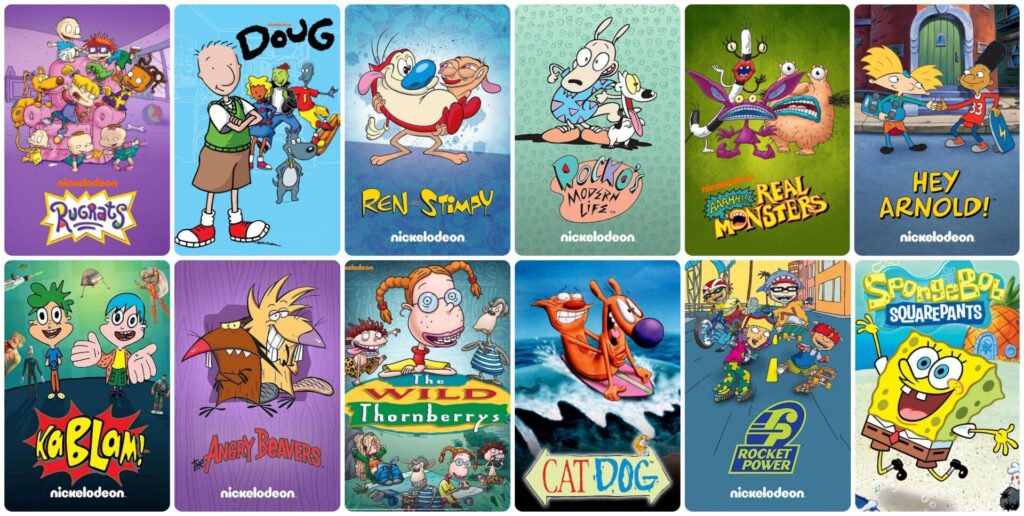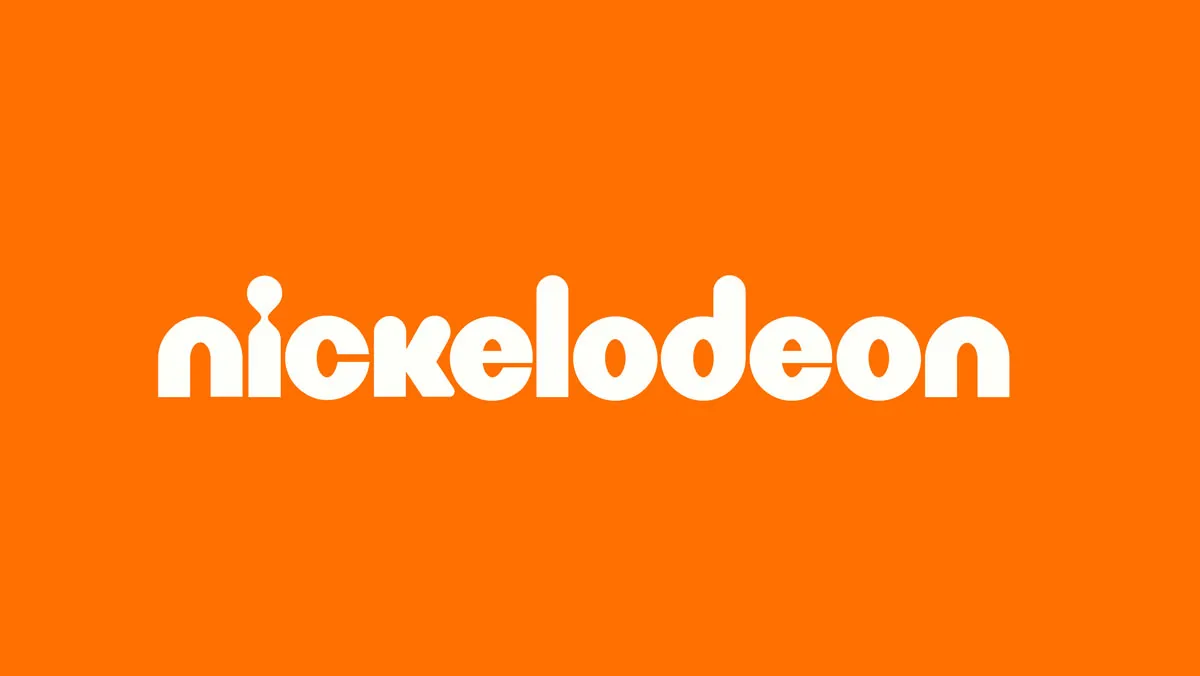Nickelodeon, often referred to as Nick, is one of the most recognizable and influential children’s television networks in the world. Founded on April 1, 1979, Nickelodeon has grown from a small cable channel to a global multimedia brand that has shaped children’s entertainment for over four decades.
The network’s origins can be traced back to C-3, a cable channel launched in 1977 that was dedicated to educational programming for children. In 1979, Warner Cable Communications rebranded C-3 as Nickelodeon, taking its name from the early movie theaters that charged a nickel for admission. The network’s initial focus was on educational content and non-violent programming, setting it apart from other children’s entertainment of the time.
The 1980s saw Nickelodeon begin to develop its unique identity and expand its programming. In 1981, the network introduced its iconic silver ball logo, which would become a staple of the brand for many years. During this decade, Nickelodeon began producing original series, with shows like “You Can’t Do That on Television” and “Double Dare” becoming early hits. These programs established Nickelodeon’s reputation for innovative, interactive content that engaged children in new ways.
A significant milestone in Nickelodeon’s history came in 1986 with the launch of Nick at Nite, a nighttime programming block featuring classic TV shows. This move allowed Nickelodeon to cater to a wider audience and establish a 24-hour presence on cable television. Nick at Nite would go on to become a successful brand in its own right, later spawning the TV Land network.
The 1990s marked a period of tremendous growth and creativity for Nickelodeon. The network introduced its famous green slime, which became a symbol of the brand’s playful and irreverent spirit. This decade saw the debut of many iconic Nickelodeon series, including “Rugrats,” “The Ren & Stimpy Show,” “Doug,” and “The Adventures of Pete & Pete.” These shows, collectively known as Nicktoons, revolutionized children’s animation and helped establish Nickelodeon as a major force in original content creation.
In 1996, Nickelodeon expanded into feature films with the creation of Nickelodeon Movies. The studio’s first release, “Harriet the Spy,” paved the way for future successes like “The Rugrats Movie” and “Jimmy Neutron: Boy Genius.”
The late 1990s and early 2000s saw Nickelodeon continue to innovate and expand its brand. The network launched Nick Jr., a daytime programming block for preschoolers, which later became its own channel. Shows like “Blue’s Clues” and “Dora the Explorer” became massive hits, combining education with entertainment in new and engaging ways.
The 2000s brought more success for Nickelodeon, with shows like “SpongeBob SquarePants” becoming global phenomena. Launched in 1999, SpongeBob quickly became Nickelodeon’s most successful property, spawning movies, merchandise, and a devoted fanbase that includes both children and adults. Other hits from this era included “The Fairly OddParents,” “Avatar: The Last Airbender,” and “iCarly,” demonstrating Nickelodeon’s ability to create diverse content appealing to different age groups within its target audience.

In the 2010s, Nickelodeon faced new challenges as viewing habits shifted with the rise of streaming services and mobile devices. The network responded by expanding its digital presence, launching apps and streaming platforms to make its content available across multiple devices. Nickelodeon also continued to produce successful new shows, such as “The Loud House” and reboots of classic properties like “Teenage Mutant Ninja Turtles.”
Nickelodeon’s influence extends far beyond television. The brand has a significant presence in consumer products, with toys, clothing, and other merchandise featuring its popular characters. Nickelodeon has also ventured into theme parks, with areas in various parks around the world and its own Nickelodeon Universe indoor theme parks.
The network’s commitment to diversity and representation has been notable in recent years. Nickelodeon has made efforts to include more diverse characters and storylines in its programming, reflecting the changing demographics of its audience and broader societal shifts.
In terms of international reach, Nickelodeon has expanded globally, with channels and programming blocks in numerous countries. The network has also produced local content in various markets, adapting its brand to different cultural contexts while maintaining its core values of fun, empowerment, and creativity.
As of 2023, Nickelodeon continues to evolve and adapt to the changing media landscape. The network has embraced streaming, with much of its content available on Paramount+ (formerly CBS All Access), reflecting its position within the larger ViacomCBS (now Paramount Global) corporate structure. Nickelodeon is also exploring new technologies, including virtual and augmented reality, to create immersive experiences for its audience.
Throughout its history, Nickelodeon has maintained a strong connection with its audience by understanding and respecting children. The network’s philosophy of “kids first” has guided its programming decisions and brand strategy, ensuring that its content remains relevant and engaging for new generations of viewers.
In conclusion, Nickelodeon’s journey from a small cable channel to a global entertainment powerhouse is a testament to its ability to innovate, adapt, and consistently create content that resonates with children and families. As it continues to navigate the ever-changing media landscape, Nickelodeon remains a significant force in children’s entertainment, with a legacy that has shaped popular culture for over four decades.
Marketing Strategies of Nickelodeon
Nickelodeon has employed a range of sophisticated marketing strategies to maintain its position as a leading children’s entertainment brand. Here’s a detailed explanation of their key marketing approaches:
1. Cross-Platform Content Distribution
Cross-platform content distribution is a cornerstone of Nickelodeon’s marketing strategy, enabling the brand to maximize audience reach and engagement across various channels. Nickelodeon leverages its extensive portfolio of content by distributing it seamlessly across multiple platforms, including television, digital streaming services, and mobile apps. For instance, Nickelodeon’s hit shows like “SpongeBob SquarePants” are not only broadcasted on TV but also available for streaming on Paramount+ and YouTube, ensuring that fans can access their favorite content anytime and anywhere.
By embracing cross-platform distribution, Nickelodeon not only expands its audience base but also enhances viewer engagement. Each platform offers unique opportunities for interaction and engagement. The annual Kids’ Choice Awards, aired live on television and streamed online, showcases Nickelodeon’s ability to engage audiences across multiple channels simultaneously. Additionally, Nickelodeon’s mobile apps feature interactive games and educational content, further deepening the brand’s connection with young viewers.
Moreover, Nickelodeon’s cross-platform strategy extends beyond content distribution to include integrated marketing campaigns and partnerships. Collaborations with brands like Lego for themed merchandise and tie-ins with movies such as “The SpongeBob Movie: Sponge on the Run” demonstrate Nickelodeon’s effective use of cross-promotion to amplify brand presence and drive engagement across different platforms. This comprehensive approach not only strengthens Nickelodeon’s market presence but also positions it as a leader in leveraging digital platforms to connect with young audiences in meaningful and engaging ways. Through strategic cross-platform content distribution, Nickelodeon continues to innovate and evolve, maintaining its status as a preferred entertainment choice for children and families worldwide.
2. Character Merchandising and Licensing
Character merchandising and licensing is a cornerstone of Nickelodeon’s marketing strategy, allowing the brand to extend its reach far beyond television screens and into the daily lives of its audience. This approach involves leveraging the popularity of Nickelodeon’s iconic characters and shows to create a wide range of products and experiences. Characters like SpongeBob SquarePants, Dora the Explorer, and the Teenage Mutant Ninja Turtles have become valuable intellectual properties, adorning everything from toys and clothing to school supplies and food items. By partnering with manufacturers and retailers, Nickelodeon ensures its characters are visible in various retail environments, reinforcing brand recognition and fostering emotional connections with young consumers. This strategy not only generates significant revenue but also serves as a form of continuous advertising, keeping Nickelodeon’s properties at the forefront of children’s minds even when they’re not watching TV.
The success of Nickelodeon’s character merchandising and licensing strategy lies in its ability to create a cohesive brand experience across multiple touchpoints. The company carefully selects licensing partners that align with its brand values and target audience, ensuring quality control and brand consistency across all products. Nickelodeon also strategically times its merchandise releases to coincide with new show launches, season premieres, or movie releases, creating synergy between its content and consumer products. Furthermore, the company has expanded its licensing efforts into experiences, such as live shows, theme park attractions, and even branded hotels, allowing fans to immerse themselves in the world of their favorite Nickelodeon characters. This comprehensive approach to character merchandising and licensing not only drives revenue but also deepens audience engagement, creating lifelong fans and brand advocates.
3. Experiential Marketing
Experiential marketing is a cornerstone of Nickelodeon’s strategy, aimed at creating memorable and interactive experiences that go beyond traditional media engagement. Through initiatives like Nickelodeon Universe theme parks and Nickelodeon Hotels & Resorts, the brand offers physical spaces where fans can immerse themselves in the world of their favorite characters. These venues feature themed rides, attractions, and meet-and-greets with iconic Nickelodeon characters, providing families with opportunities to create lasting memories and strengthen their emotional ties to the brand.
Live shows and tours featuring popular characters further enhance Nickelodeon’s experiential marketing efforts by bringing the excitement directly to fans in various locations. These events not only entertain but also reinforce brand visibility and engagement outside of digital and broadcast platforms. Additionally, Nickelodeon-themed cruises offer unique vacation experiences where families can enjoy themed activities, entertainment, and dining while sailing to exotic destinations. By leveraging experiential marketing, Nickelodeon not only enhances brand loyalty but also attracts new audiences who seek interactive and immersive entertainment experiences. These initiatives underscore Nickelodeon’s commitment to providing holistic entertainment that transcends screens and resonates deeply with children and families worldwide.
4. Strategic Partnerships
Strategic partnerships are integral to Nickelodeon’s marketing strategy, enabling the brand to expand its reach and enhance its offerings through collaborative efforts with other businesses and organizations. Nickelodeon forms alliances with companies in various industries, including toy manufacturers, food and beverage brands, and entertainment venues, to co-create products and experiences that resonate with its audience. These partnerships often involve co-branded merchandise, promotional tie-ins, and themed events that leverage the strengths and reach of both parties, maximizing exposure and engagement.
By partnering strategically, Nickelodeon not only diversifies its revenue streams but also strengthens brand affinity and loyalty among consumers. For instance, collaborations with toy companies like Hasbro and Mattel result in exclusive toys featuring Nickelodeon characters, which are sold globally in major retail outlets. Moreover, partnerships with movie studios for co-branded promotions tied to blockbuster releases, such as “The SpongeBob Movie: Sponge on the Run,” extend Nickelodeon’s brand visibility across multiple platforms and enhance its appeal among both existing and new audiences. These strategic alliances underscore Nickelodeon’s ability to innovate and remain relevant in the competitive entertainment landscape while offering fans new and exciting ways to engage with their favorite characters and shows.

